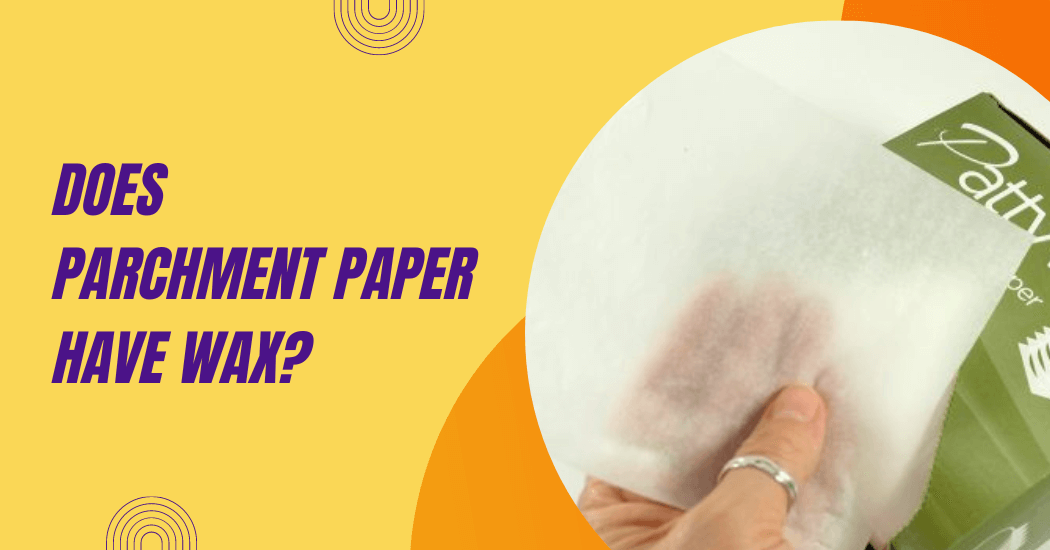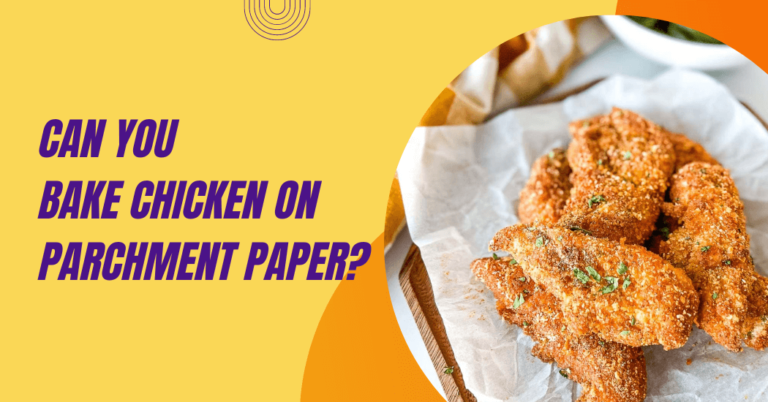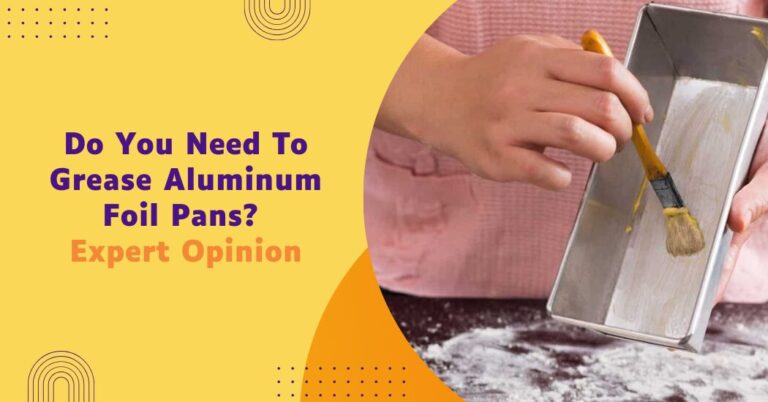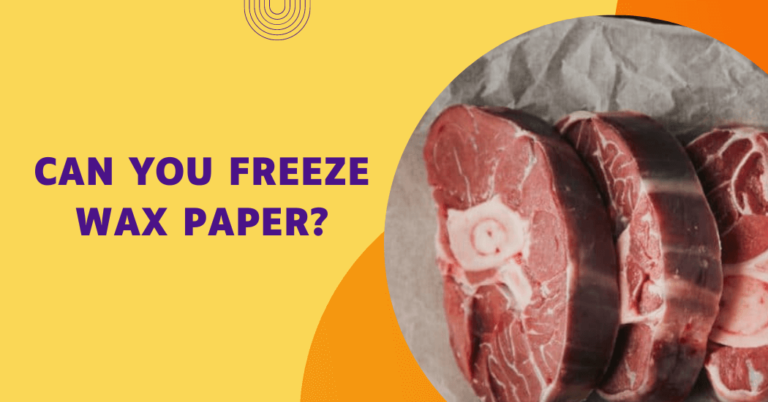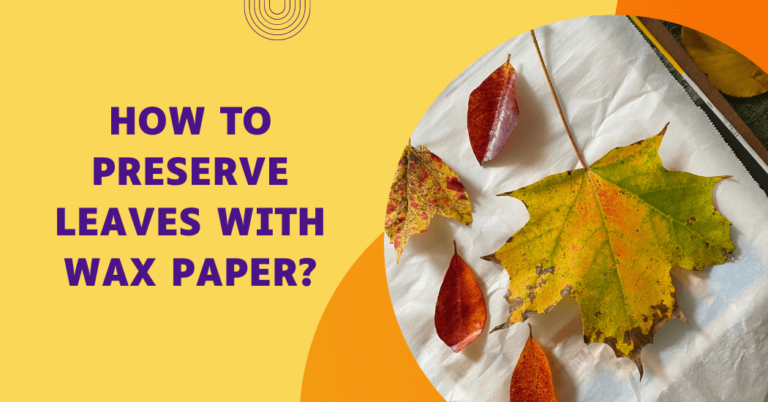Does Parchment Paper Have Wax?
Parchment paper is a versatile kitchen staple and is often used in baking, lining cake pans, making candy or cookies and roasting vegetables. It is non-stick and heat-resistant properties. Its ability to prevent food from sticking to pans and trays has made it a popular choice among home cooks and professional chefs alike.
However, there has been an ongoing debate and confusion surrounding the presence of wax in parchment paper. Some users claim that parchment paper contains a wax coating, while others argue that it is wax-free.
In this exploratory discussion, we will delve into the question, “Does parchment paper have wax?” by examining its composition, manufacturing process and applications.
By shedding light on this topic, we aim to provide clarity to those seeking to make informed decisions about using parchment paper in their cooking endeavours.
Does parchment paper have wax?
The answer to this question depends on the type of parchment paper you are using. While some parchment papers contain a wax coating, others are free from wax. To understand why, we must first look into the composition of parchment paper itself and how it is made.
Most types of parchment paper consist mainly of cellulose fibres that are obtained from either wood pulp or cotton fibres, depending on the manufacturer. These fibres are then combined with a variety of other elements, such as clay and calcium carbonate, to give parchment paper its non-stick properties.
When manufacturing custom parchment paper, some manufacturers may choose to use a wax coating to provide an additional layer of protection against sticking food. This wax coating is usually made from either beeswax or soybean wax. On the other hand, there are also parchment papers that do not contain any wax at all and rely solely on their non-stick properties for preventing food from sticking to pans.
Knowing this, users should check the packaging of their parchment paper to determine if it contains a wax coating. If you are looking for totally wax-free parchment paper, then you should look for one that is labelled as “wax-free” or “non-stick without wax”.
When using parchment paper in baking, it’s important to note that the presence of wax can affect how well the food cooks and browns.
For example, if there is a wax coating on the parchment paper, it can insulate the food from the heat and prevent it from achieving a golden brown colour. As such, some users may choose to use wax-free parchment paper for baking applications to get better results.
Ultimately, the choice of whether or not to use parchment paper with a wax coating will depend on your preferences and the application you are using it for.
By examining its composition and understanding how it is made, we can finally answer the question: Does parchment paper have wax? It depends on the type of parchment paper, so be sure to check the packaging before use!
Wax Paper vs parchment paper
Although wax paper and parchment paper may look similar, they are quite different. Wax paper is coated with a layer of wax to give it its non-stick properties. This makes it ideal for cooking applications such as lining the bottom of baking pans to prevent food from sticking, wrapping sandwiches and other food items.
However, the presence of wax can affect how well the food cooks and browns, so it is not recommended for baking applications.
Parchment paper, on the other hand, does not contain any wax. Instead, it is made from a thin sheet of paper treated with an acid to make it heat and moisture-resistant. This process gives parchment paper its non-stick properties without the need for wax coating. As such, parchment paper is great for baking applications as it does not affect how the food cooks or browns.
A. Comparative Analysis of their Properties and Applications
When choosing between wax paper and parchment paper, some key factors to consider are temperature resistance, safety for use in contact with food and non-stick properties. Let’s take a look at how these two types of paper compare in these areas:
- Temperature Resistance: Wax paper is not designed to withstand high temperatures, whereas parchment paper can resist temperatures up to 420°F/220°C.
- Safety for Use in Contact with Food: The wax paper should not be used directly with food as the wax coating could contaminate it. Parchment paper, on the other hand, is certified as safe for use in direct or indirect contact with food according to ISO 9001 and other international standards.
- Non-stick Properties: Both wax paper and parchment paper have non-stick properties that prevent food from sticking to pans or other surfaces. However, the presence of wax on the wax paper may affect how well the food cooks and browns.
B. Understanding why they Should Not be used interchangeably
Now that we have compared the properties and applications of wax paper and parchment paper, it is clear that they are not the same. While both types of paper have non-stick properties, their specific uses can vary greatly depending on whether or not there is a wax coating present.
Thus, users should take care to read the packaging of their paper products and not use them interchangeably if they want to get the best results.
When baking, parchment paper should be used as it does not contain any wax and will not affect how the food cooks or browns. For other cooking applications such as wrapping sandwiches or lining baking pans, wax paper can be used safely in direct contact with food.
However, it should not be used to bake in the oven as the wax coating can contaminate the food and lead to poor results.
Finally, when choosing between wax paper and parchment paper, users should always consider their own needs and preferences. By understanding how these two papers differ in terms of properties and applications, we can make better decisions about which one is best for our particular situation.
With this information in mind, we can ensure that we get the best possible baking or cooking results with either wax paper or parchment paper!
What types of wax are used in parchment paper?
When manufacturing parchment paper, some manufacturers may choose to use a wax coating to provide an additional layer of protection against sticking food. This wax coating is usually made from either beeswax or soybean wax.
- Beeswax: Beeswax is derived from the honeycomb of honeybees and provides a glossy finish that helps repel moisture and prevent sticking. Soybean wax, on the other hand, is a vegetable-based wax that is less expensive and easier to obtain than beeswax but may not provide the same level of protection.
- Soybean Wax: Soybean wax is derived from the oil of the soybean plant and provides an economical alternative to beeswax. However, it does not have the glossy finish of beeswax and may not provide as much protection against moisture or sticking food.
In either case, the wax coating on parchment paper can provide an extra layer of protection and make it easier to use for baking, sandwich wrapping and other applications.
However, users should keep in mind that the presence of wax can affect how well the food cooks and browns, so it is not recommended for baking applications.
Before using parchment paper for any application, be sure to check the packaging to determine if it has a wax coating or not. This will help ensure that you get the best possible results!
Wax contamination in parchment paper
In some instances, parchment paper may contain a wax coating that can be harmful to food. This is typically the result of a manufacturing error known as ‘wax contamination’.
Wax contamination occurs when manufacturers apply a layer of wax onto their parchment paper during production but fail to properly label it as such. This type of parchment paper often ends up in supermarkets and other retail outlets, where unsuspecting customers may purchase it without realizing that it contains wax.
The potential risks associated with consuming food contaminated with wax include gastrointestinal distress and digestive issues. In some cases, there may also be a risk of allergic reactions or other adverse health effects depending on the type of wax present.
- Instances of wax contamination in commercial parchment paper
There have been several instances of wax contamination in commercial parchment paper. In 2017, for example, one popular brand of parchment paper was recalled due to the presence of a ‘petroleum-based paraffin or other wax’ coating on some batches. The manufacturer stated that this posed a potential health risk to consumers and urged customers not to use any affected products.
Similarly, in 2018 another brand of parchment paper was recalled due to the presence of an ‘unauthorized wax coating’. The manufacturer stated that this could have caused potential health risks for consumers and urged customers not to use any affected products.
- Potential risks and Implications for food preparation
Consuming food contaminated with wax can potentially lead to gastrointestinal distress and digestive issues. In some cases, there may also be a risk of allergic reactions or other adverse health effects depending on the type of wax present. Therefore, consumers need to ensure that any parchment paper they purchase does not contain any wax contamination.
- Ensuring product purity and safety for consumers
When purchasing parchment paper, consumers should always check the packaging for any indication that a wax coating may be present. Manufacturers should also be sure to properly label any parchment paper with a wax coating, to ensure that consumers are aware of this before they purchase it.
Finally, manufacturers should take care to check for potential wax contamination and take the necessary steps to prevent it from occurring. This can be done by implementing thorough manufacturing processes and QA controls during production.
Doing so can help ensure that their parchment paper is safe for consumers to use and free from any potential wax contamination.
Wrap Up
It can be said that parchment paper does indeed contain wax. This wax is beneficial for many reasons, from non-stick cooking and baking for easy cleanup to helping keep bread and pastries soft. Another benefit is the wax used gives parchment paper a longer shelf life than regular paper products.
While a small amount of wax can be consumed, it is important to understand that consuming high levels of wax or overheating the parchment paper can have health risks. As always, it is wise to use caution when using any product and check directions before proceeding with any application.
Parchment paper has a wide variety of uses in your kitchen from line cookie sheets, wrap sandwiches or preserving food in the freezer. The versatility makes this product a wonderful addition to cooking techniques and an alternative to foil or plastic wraps.
